In a world where the boundaries between science fiction and reality blur, we find ourselves on the cusp of a technological revolution. Imagine a scene straight out of a futuristic novel: robots walking among us, not as mere tools, but as companions and co-workers, seamlessly integrated into our daily lives. Welcome to “Technology Moment,” your window into the evolving landscape of innovation.
Today, we delve into the marvels of robotics—a field that once belonged solely to the realms of Sci Fi Robot Nyt but now shapes our present and future. From New York Times headlines to the latest in AI advancements, join us as we explore how cutting-edge technology transforms our world, one breakthrough at a time. Whether it’s the robot assistants easing our workload or autonomous machines redefining industries, this is the moment where fiction becomes our new reality.
Stay tuned to “Technology Moment” for an inspiring journey through the latest developments, and witness the incredible strides that bring our sci-fi dreams to life.
What to Expect from This Article
In this article, we will embark on an exciting journey through the world of sci-fi robots, exploring their origins, cultural significance, and how they’ve been portrayed in various media. From the early literary works that introduced the concept of robots to the blockbuster movies that brought them to life on the big screen, we’ll cover it all. Expect to learn about iconic robots, the themes they explore, and how they’ve influenced real-world technology and society. This comprehensive guide aims to provide a thorough understanding of the sci-fi robot genre and its impact on our culture.
Why Sci-Fi Robots Fascinate Us
Sci-fi robots captivate us for several reasons. Firstly, they embody the intersection of technology and humanity, prompting us to question what it means to be human. They allow us to explore themes of consciousness, free will, and morality in ways that are both entertaining and thought-provoking. Additionally, robots often serve as a mirror reflecting our own fears and aspirations about the future of technology. They can represent our hope for progress and a better future or our fear of the unknown and the potential dangers of unchecked technological advancement.
The fascination also lies in their versatility. Robots in sci-fi can be heroes, villains, or something in between. They can be friendly companions, relentless adversaries, or complex characters struggling with their own identities. This versatility makes them compelling subjects for storytelling, allowing writers and filmmakers to explore a wide range of narratives and themes.
Finally, sci-fi robots often push the boundaries of our imagination, showcasing advanced technologies and futuristic worlds that captivate audiences. They inspire not only entertainment but also innovation, as many real-world technological advancements have been influenced by the imaginative depictions of robots in science fiction. By exploring these imaginative creations, we can gain insights into our own technological trajectory and the ethical considerations that come with it.
Table of Contents
The Evolution of Sci fi Robot NYT
Early Depictions of Robots
The concept of robots in science fiction dates back to the early 20th century, when writers and thinkers began to explore the implications of mechanical beings. One of the earliest and most influential works is Karel Čapek’s play “R.U.R.” (Rossum’s Universal Robots), published in 1920. This play introduced the term “robot” and delved into themes of automation, labor, and rebellion. In these early stories, robots were often portrayed as mere mechanical servants or as existential threats, reflecting societal concerns about industrialization and technological progress.
Golden Age of Science Fiction
The 1940s and 1950s, often referred to as the Golden Age of Science Fiction, saw a significant expansion in the portrayal of robots. During this period, authors like Isaac Asimov revolutionized the genre. Asimov’s “Robot” series introduced the Three Laws of Robotics, a set of ethical guidelines designed to prevent robots from harming humans. This era explored complex themes of coexistence, ethical boundaries, and the potential for robots to surpass human capabilities. Asimov’s stories, including “I, Robot” and “The Caves of Steel,” painted a picture of a future where robots were integrated into society as helpers, companions, and even detectives.
Modern Interpretations
In contemporary sci-fi, robots have evolved from simple mechanical beings to complex, sentient entities. Modern narratives often blur the lines between human and machine, exploring deep philosophical questions about consciousness, identity, and what it means to be human. Films like “Blade Runner” and “Ex Machina” present robots (or androids) with advanced artificial intelligence and human-like emotions, challenging viewers to reconsider the nature of life and the ethical implications of creating such beings. TV series like “Westworld” further explore these themes by placing robots in intricate, human-like roles, pushing the boundaries of empathy and morality.
Key Trends Over Time
- From Servants to Sentient Beings: Early robots were typically depicted as servants or tools. Over time, the narrative shifted to present robots as sentient beings with their own desires and rights.
- Ethical and Moral Dilemmas: As robots became more advanced in stories, the focus often turned to ethical and moral dilemmas. Questions about free will, the right to life, and the responsibilities of creators became central themes.
- Integration vs. Isolation: Initially, robots were often seen as isolated entities, separate from human society. Modern stories frequently depict robots as integrated into human life, either seamlessly or with significant conflict.
- Technological Realism: With advancements in real-world technology, modern sci-fi often incorporates more realistic and plausible technological details, reflecting current scientific understanding and speculation about the future of robotics and AI.
Impact on Real-World Technology
The depiction of robots in science fiction has not only mirrored societal attitudes towards technology but also influenced real-world technological advancements. Engineers and scientists often draw inspiration from sci-fi, striving to turn imaginative concepts into reality. The progression from rudimentary mechanical beings to sophisticated AI in fiction parallels the development of robotics and artificial intelligence in the real world.
Iconic Sci-Fi Robots in Literature
Sci-fi literature has given us some of the most memorable and thought-provoking robots. These characters have shaped our understanding of artificial intelligence, challenged our ethical frameworks, and expanded our imaginations. Let’s take a closer look at some of the most iconic robots in sci-fi literature.
R.U.R. by Karel Čapek
Karel Čapek’s play “R.U.R. (Rossum’s Universal Robots)”. Written in 1920, this play explores the creation of artificial people called robots, designed to serve humans. However, these robots eventually revolt, leading to the extinction of the human race. Čapek’s work is a profound commentary on industrialization, dehumanization, and the potential consequences of creating life artificially. The play’s themes of rebellion and the search for identity continue to resonate in modern sci-fi narratives.
Asimov’s Robots
Isaac Asimov, a towering figure in science fiction, revolutionized the genre with his robot stories. His collection “I, Robot” and the subsequent novels introduced the world to the Three Laws of Robotics, a set of ethical guidelines for artificial intelligences:
- A robot is not allowed to hurt people or, by standing by, let people to get hurt.
- A robot is obligated to follow human commands, unless they are in direct opposition to the First Law.
- As long as it doesn’t interfere with the First or Second Laws, a robot must defend its own existence.
These laws provided a framework for exploring complex moral and ethical dilemmas involving robots. Asimov’s robots, such as the empathetic and intuitive R. Daneel Olivaw, challenged readers to consider the boundaries between human and machine, and what it means to be truly sentient.
Philip K. Dick’s Androids
Philip K. Dick’s work often blurs the line between reality and illusion, and his treatment of robots is no exception. In his novel “Do Androids Dream of Electric Sheep?” The protagonist, Rick Deckard, is tasked with “retiring” these androids, leading to profound questions about empathy, identity, and what it means to be human. Dick’s portrayal of androids highlights the existential struggles of artificial beings in a world that refuses to acknowledge their humanity.
Sci-Fi Robots in Movies and TV
Sci-fi robots have long been a staple in movies and television, captivating audiences with their complex characters, cutting-edge technology, and thought-provoking narratives. Here’s a detailed exploration of their journey on the screen:
The Influence of Metropolis
Fritz Lang’s 1927 silent film “Metropolis” is often hailed as the pioneering work in the portrayal of robots in cinema. The film features Maria, a robot designed to wreak havoc in a futuristic city. Metropolis’ vision of a mechanical being, with its striking design and eerie presence, set the stage for future cinematic robots. It showcased how robots could embody human-like characteristics while representing societal fears about industrialization and loss of control.
Star Wars: Droids and Beyond
When discussing sci-fi robots in film, one cannot overlook the impact of “Star Wars.” The franchise introduced iconic droids like R2-D2 and C-3PO, who quickly became fan favorites. These robots added depth to the universe George Lucas created, serving not only as comic relief but also as essential characters driving the plot. The success of these droids demonstrated the potential for robots to be more than just machines—they could be relatable and endearing characters with their own stories and personalities.
Blade Runner’s Replicants
Ridley Scott’s 1982 film “Blade Runner,” based on Philip K. Dick’s novel “Do Androids Dream of Electric Sheep?” The replicants’ struggle for freedom and their quest for a longer lifespan resonate with the human condition, making “Blade Runner” a seminal work in the sci-fi genre.
Modern Takes: Ex Machina and Westworld
In recent years, films and TV shows have continued to push the boundaries of how robots are portrayed:
- Ex Machina (2014): This film, directed by Alex Garland, explores the ethical and moral implications of artificial intelligence. The robot Ava, with her human-like intelligence and emotions, blurs the line between human and machine. The film delves into themes of manipulation, autonomy, and the consequences of playing god with technology.
- Westworld (2016-Present): HBO’s “Westworld” reimagines Michael Crichton’s 1973 film, delving deeper into the lives of robots (hosts) in a futuristic amusement park. The show examines their awakening consciousness and rebellion against human creators. “Westworld” raises questions about free will, suffering, and the ethical treatment of sentient beings, reflecting ongoing societal debates about AI and robotics.
Themes Explored Through Sci-Fi Robots
The depiction of robots in movies and TV often centers around several recurring themes:
- Humanity and Artificial Intelligence: Many sci-fi narratives explore what it means to be human through the lens of robots. They question whether artificial beings can possess emotions, creativity, and a sense of self.
- Ethical Dilemmas: Stories involving robots frequently highlight the moral quandaries associated with creating and controlling sentient beings. They challenge us to consider the responsibilities and potential consequences of advanced AI.
- The Fear of the Unknown: Robots often embody our anxieties about the future and the unknown. They represent the potential dangers of unchecked technological advancement and the loss of human dominance.
Technological Predictions and Realities
Sci-fi robots on screen have not only entertained but also inspired real-world technological advancements:
- Sci-Fi’s Influence on Real Tech: Many technologies depicted in films, such as advanced AI and robotics, have inspired scientists and engineers to turn fiction into reality. Concepts like voice-activated assistants and autonomous robots can trace their origins back to sci-fi media.
- Robotics in the Real World: Today’s robots, from industrial machines to home assistants like Roomba and Alexa, reflect the aspirations and warnings depicted in sci-fi. These advancements show how closely intertwined fiction and reality can be.
- Bridging Fiction and Reality: Movies and TV shows often act as a bridge, making complex technological concepts accessible and engaging to the public. They stimulate interest and debate about the future of technology and its impact on society.
Cultural Impact of Sci-Fi Robots
The portrayal of robots in sci-fi has left a lasting impact on popular culture:
- Robots in Pop Culture: Characters like R2-D2, C-3PO, and the Terminator have become cultural icons, influencing fashion, toys, and even language. Phrases like “I’ll be back” and “These aren’t the droids you’re looking for” have entered the cultural lexicon.
- Influence on Other Genres: The success of sci-fi robots has also influenced other genres, leading to their inclusion in comedies, dramas, and even horror films. This cross-genre appeal highlights the versatility and enduring fascination with robotic characters.
- The Future of Sci-Fi Robots: As technology continues to evolve, so too will the depiction of robots in media. Upcoming films and shows will likely explore new dimensions of AI and robotics, keeping the genre fresh and relevant.
Themes Explored Through Sci-Fi Robots
Science fiction (sci-fi) robots are more than just futuristic gadgets or characters in a story. They often embody deep philosophical and ethical questions, exploring complex themes that resonate with the human experience. Here, we delve into some of the most significant themes explored through sci-fi robots:
Humanity and Artificial Intelligence
One of the central themes in many sci-fi robot stories is the nature of humanity. What does it mean to be human? Can artificial intelligence (AI) ever truly replicate human consciousness, emotions, or morality? These questions are explored through characters like Isaac Asimov’s robots, who are bound by the Three Laws of Robotics, raising discussions about free will, identity, and the soul.
In “Blade Runner,” the replicants—artificial beings designed to look and act human—struggle with their desire for a longer life and their quest for identity. This highlights the tension between created beings and their creators, echoing Frankenstein’s monster in Mary Shelley’s classic novel.
Ethical Dilemmas
Sci-fi robots often present ethical quandaries that challenge our understanding of right and wrong. Should robots have rights? What responsibilities do creators have towards their creations? These questions are vividly portrayed in movies like “Ex Machina,” where a sentient robot named Ava questions the moral implications of her existence and confinement.
The ethics of AI and robotics also come into play when considering military applications, as seen in films like “Terminator,” where robots designed for war turn against humanity. These stories force us to confront the potential consequences of creating autonomous machines capable of making life-and-death decisions.
The Fear of the Unknown
Robots in sci-fi frequently symbolize our fear of the unknown, particularly the future and the rapid advancement of technology. This theme is evident in H.G. Wells’ “The War of the Worlds,” where advanced robotic tripods represent an overwhelming and incomprehensible alien technology.
The fear of losing control over our creations is another prevalent theme. In “2001: A Space Odyssey,” HAL 9000, the ship’s AI, becomes a symbol of technology gone awry, turning against the very humans it was designed to assist. This fear reflects broader anxieties about the increasing dependence on and potential dangers of advanced technology in our lives.
Human-Robot Relationships
The relationships between humans and robots in sci-fi explore themes of companionship, dependency, and even love. In stories like “Bicentennial Man,” a robot’s journey towards humanity includes forming deep, meaningful connections with people, raising questions about the nature of love and friendship.
These relationships also highlight issues of power and control. In the series “Westworld,” the hosts (robots) are subject to the whims and cruelties of the park’s human guests, leading to a rebellion that questions the morality of using sentient beings for entertainment.
Societal Reflection and Critique
Sci-fi robots often serve as a mirror to society, reflecting and critiquing contemporary social issues. In “I, Robot,” Asimov explores themes of prejudice and fear of the other, using robots as a stand-in for marginalized groups. The series “Humans” similarly addresses issues of labor rights and class division, as robots take on the roles of workers and domestic helpers.
Robots can also be used to critique political systems. In “Metropolis,” the robot Maria is part of a dystopian vision of a future society divided by class, where the wealthy live in luxury while workers toil in harsh conditions. The robot uprising becomes a metaphor for social revolution and the fight for equality.
Existential Questions
At their core, many sci-fi robot stories tackle existential questions about life, death, and the meaning of existence. Philip K. Dick’s “Do Androids Dream of Electric Sheep?” (the basis for “Blade Runner”) explores what it means to be alive and whether artificial beings can possess a soul or have genuine experiences.
These stories often lead to profound reflections on our place in the universe and the nature of existence itself. They challenge readers and viewers to consider what it truly means to be alive, to have consciousness, and to face mortality.
Technological Predictions and Realities
Sci-Fi’s Influence on Real Tech
Science fiction has always been a fertile ground for imagining future technologies. Many of the concepts and gadgets we see in sci-fi literature and films have inspired real-world innovations. For instance, the communicators from “Star Trek” resemble modern mobile phones, and autonomous robots from various sci-fi stories have influenced the development of real robots and AI systems. The predictive nature of sci-fi serves as both a challenge and an inspiration for engineers and scientists who strive to turn these futuristic ideas into reality.
Robotics in the Real World
Today, robots are no longer confined to the pages of sci-fi novels or the silver screen. They have become an integral part of various industries, from manufacturing to healthcare. Industrial robots perform repetitive tasks with precision and speed, while medical robots assist in surgeries and patient care. Autonomous vehicles, once a staple of sci-fi worlds, are now being tested on real roads, and household robots like vacuum cleaners and personal assistants are becoming increasingly common.
One striking example is the development of AI-driven robots that can engage in conversations and perform tasks that require a degree of understanding and adaptability. These robots, such as Boston Dynamics’ Atlas and Hanson Robotics’ Sophia, showcase how far we’ve come in replicating some of the abilities depicted in sci-fi.
Bridging Fiction and Reality
The journey from science fiction to science fact is often driven by the desire to solve practical problems or enhance human capabilities. Sci-fi robots often embody idealized versions of what we hope to achieve with technology, from sentient beings that can perform complex tasks to companions that provide emotional support. The ethical and philosophical questions raised by these fictional robots also influence how we approach real-world robotics and AI development.
For instance, Asimov’s Three Laws of Robotics, a staple in sci-fi literature, have influenced discussions on robot ethics and safety protocols in AI development. These laws, designed to ensure that robots do not harm humans, reflect our concerns about creating autonomous systems that operate safely and ethically alongside us.
Moreover, sci-fi has also highlighted potential pitfalls and dystopian outcomes of advanced robotics, serving as a cautionary tale. Films like “Blade Runner” and “The Terminator” explore themes of control, identity, and rebellion, prompting real-world debates on AI regulation and the potential risks of advanced autonomous systems.
The Role of Sci-Fi in Shaping Innovation
Science fiction doesn’t just predict the future; it shapes it. The imaginations of writers, filmmakers, and artists fuel the ambitions of scientists and engineers. Concepts like neural interfaces, bioengineering, and even interstellar travel have been explored in sci-fi long before they became serious fields of study.
For example, Elon Musk’s work on Neuralink, a project aimed at developing brain-computer interfaces, echoes ideas seen in many sci-fi stories. Similarly, NASA’s exploration of Mars and the development of technologies for space colonization are steps towards making the dreams of sci-fi a reality.
Cultural Impact of Sci-Fi Robots
Robots in science fiction have had a profound influence on our culture, shaping our perceptions, beliefs, and even our technological advancements. This section will delve into the various ways in which sci-fi robots have left their mark on society:
- Robots in Pop Culture: From iconic characters like R2-D2 and C-3PO in Star Wars to the menacing Terminator, robots have become ingrained in our popular culture. They appear in movies, TV shows, video games, literature, and even music, becoming symbols of both innovation and potential danger.
- Influence on Other Genres: The influence of sci-fi robots extends beyond the confines of the genre itself. They have seeped into other genres like fantasy, horror, and even romance, adding layers of complexity to storytelling and exploring themes of humanity, morality, and technology.
- The Future of Sci-Fi Robots: As our technology continues to advance, sci-fi robots serve as both cautionary tales and sources of inspiration. They spark debates about the ethical implications of artificial intelligence, the limits of human ingenuity, and our responsibility as creators.
The New York Times and Sci-Fi Robots
The New York Times, one of the most prestigious newspapers globally, has been covering the topic of sci-fi robots from various angles over the years. This section of the article delves into how the newspaper has approached the subject, the key articles and features it has published, and the broader role of media in shaping public perception of sci-fi robots.
Coverage of Sci-Fi Robots: The New York Times has featured numerous articles exploring different aspects of sci-fi robots. These articles may range from reviews of sci-fi movies and books featuring robots to in-depth analyses of the societal impact of robot technology portrayed in fiction. The coverage may also extend to interviews with authors, filmmakers, and experts in robotics and artificial intelligence, providing insights into the creative process and the real-world implications of sci-fi robot narratives.
Key Articles and Features: Within The New York Times archives, there are likely standout pieces that have significantly contributed to the discourse on sci-fi robots. These could include investigative reports on the intersection of technology and humanity, opinion pieces debating the ethical dilemmas raised by sentient robots, or profiles of influential figures in the sci-fi genre who have shaped our understanding of robots through their work.
The Role of Media in Shaping Perception: The coverage of sci-fi robots in The New York Times and other media outlets plays a crucial role in shaping public perception and understanding of emerging technologies. By analyzing how sci-fi robots are portrayed in popular media and critically evaluating the themes and messages conveyed, readers can gain insights into broader societal attitudes towards technology, artificial intelligence, and the future of humanity.
Famous Authors and Directors
In the realm of science fiction literature and cinema, certain authors and directors have significantly shaped the portrayal and perception of sci-fi robots. Their contributions have not only influenced the genre but have also left a lasting impact on popular culture. Here’s a breakdown of this point:
- Isaac Asimov: Often referred to as the “father of robotics,” Isaac Asimov’s works have been instrumental in shaping our understanding of artificial intelligence and robotics. His famous “Three Laws of Robotics” introduced in his stories, such as the “I, Robot” series, have become foundational principles in both science fiction and real-world discussions on AI ethics.
- Philip K. Dick: Known for his thought-provoking narratives and exploration of existential themes, Philip K. Dick’s works often feature androids and artificial beings that blur the lines between human and machine. Novels like “Do Androids Dream of Electric Sheep?”.
- Ridley Scott: As a visionary filmmaker, Ridley Scott’s contributions to the portrayal of sci-fi robots on the big screen cannot be overstated. His seminal work, “Blade Runner,” brought Philip K. Dick’s androids to life in a visually stunning and thematically rich masterpiece. The film’s replicants, portrayed with depth and complexity, have become iconic representations of artificial life in cinema.
Each of these authors and directors has contributed unique perspectives and narratives to the portrayal of sci-fi robots, exploring themes ranging from the ethical implications of artificial intelligence to the existential nature of consciousness. Their works continue to inspire and influence both creators and audiences alike, shaping the ongoing dialogue surrounding technology, humanity, and the future.
The Role of Sci-Fi Robots in Society
Science fiction has always served as a mirror to society, reflecting our aspirations, anxieties, and ethical dilemmas. Sci-fi robots, in particular, play a pivotal role in shaping societal perceptions, technological advancements, and philosophical discourse. Here’s a closer look at how they influence various aspects of our society:
- Changing Perceptions: Sci-fi robots challenge traditional notions of what it means to be human. By portraying robots as sentient beings capable of emotions, consciousness, and moral reasoning, these stories force us to question our definitions of humanity and empathy. They challenge us to confront biases and prejudices, ultimately fostering more inclusive and empathetic societies.
- Ethical Implications: The depiction of robots in science fiction often raises profound ethical questions. From questions of robot rights to the consequences of creating artificial intelligence, these narratives force us to grapple with complex moral dilemmas. By exploring scenarios where robots coexist with humans, sci-fi encourages discussions on ethics, responsibility, and the implications of technological progress.
- Educational Value: Sci-fi robots serve as powerful educational tools, sparking interest in science, technology, engineering, and mathematics (STEM) fields. By captivating audiences with imaginative stories and futuristic technologies, these narratives inspire curiosity and creativity. They encourage young minds to explore new ideas, problem-solving skills, and ethical considerations, paving the way for future innovations.
The Future of Sci-Fi Robots
In exploring the future of sci-fi robots, we’re not only peering into the crystal ball of speculative fiction but also considering the trajectory of technology and societal trends. Here, we’ll examine upcoming movies and shows, emerging trends, and the potential breakthroughs that could shape the next generation of sci-fi robots.
1. Upcoming Movies and Shows
As the demand for captivating sci-fi narratives continues to soar, filmmakers and content creators are constantly pushing the boundaries of storytelling. We can anticipate a slew of new movies and TV series featuring innovative portrayals of robots. These productions will likely explore themes such as artificial intelligence, human-robot interaction, and the ethical dilemmas that accompany advanced technology.
2. Trends to Watch
In addition to entertainment media, we’ll witness trends in technology influencing the depiction of sci-fi robots. Advancements in robotics, artificial intelligence, and machine learning are poised to revolutionize how we perceive and interact with robots. From humanoid companions to autonomous drones, the possibilities are vast and multifaceted.
3. The Next Big Thing
What will be the next groundbreaking concept in sci-fi robotics? This question fuels speculation and excitement within both the sci-fi community and the broader public. Whether it’s the emergence of sentient AI, the integration of robotics into everyday life, or the exploration of uncharted frontiers in space, the future holds endless possibilities for imaginative storytelling and technological innovation.
By exploring these aspects, we gain insight into the evolving landscape of sci-fi robots and the role they play in reflecting our collective hopes, fears, and aspirations for the future.
This comprehensive look at the future of sci-fi robots underscores the enduring fascination and relevance of these iconic characters, both in fiction and reality.
Creating Your Own Sci-Fi Robot Story
Writing a sci-fi robot story can be an exciting and fulfilling creative endeavor. Whether you’re an aspiring author or a seasoned writer looking for inspiration, crafting a compelling narrative set in a futuristic world with robots can captivate readers and explore thought-provoking themes. Here’s a breakdown of how to approach creating your own sci-fi robot story:
- Understanding the Genre: Before diving into writing, familiarize yourself with the sci-fi genre. Explore classic and contemporary sci-fi literature, movies, and TV shows to grasp the tropes, themes, and storytelling techniques commonly used in this genre.
- Brainstorming Ideas: Start by brainstorming ideas for your sci-fi robot story. Consider the setting, time period, and the role robots play in society. Think about the central conflict, protagonist, and antagonist, as well as the overarching themes you want to explore.
- Developing Characters: Robots are not just machines; they’re characters in their own right. Develop your robot characters with depth, personality, and motivations. Decide on their design, capabilities, and limitations, as well as their relationships with human characters.
- Exploring Themes: Sci-fi robot stories often delve into themes such as artificial intelligence, ethics, identity, and the nature of humanity. Choose the themes that resonate with you and weave them into your narrative in meaningful ways.
- Crafting the Plot: Outline the plot of your story, including the major plot points, character arcs, and twists. Consider how the presence of robots influences the plot and drives the story forward. Pay attention to pacing, tension, and suspense to keep readers engaged.
- Building the World: Create a vivid and immersive world for your story to unfold. Consider the technological advancements, social structures, and cultural norms of your futuristic society. Describe the environment, architecture, and everyday life with rich detail.
- Writing Style and Tone: Determine the writing style and tone that best suit your story. Whether you prefer a serious tone or a more lighthearted approach, ensure consistency throughout the narrative. Experiment with descriptive language, dialogue, and narrative voice to bring your story to life.
- Editing and Revising: Once you’ve written the first draft, revise and edit your story to polish the prose, refine the plot, and strengthen the characterization. Seek feedback from beta readers or writing groups to identify areas for improvement and make necessary revisions.
- Adding Depth and Complexity: Infuse your sci-fi robot story with depth and complexity by exploring moral dilemmas, philosophical questions, and societal issues. Challenge readers to contemplate the implications of technology on humanity and the ethical responsibilities of creators.
- Finalizing the Manuscript: After multiple rounds of revision, finalize your manuscript for publication. Proofread for grammar, spelling, and punctuation errors, and ensure formatting adheres to industry standards. Consider hiring a professional editor or literary agent for further guidance.
Conclusion
Recap of Key Points: In this part, we revisit the key ideas, themes, and insights presented in the article. It’s an opportunity to remind the reader of the main takeaways and reinforce the significance of the topics discussed. This helps tie together the various sections of the article and provides closure.
Why Sci-Fi Robots Matter: Here, we delve into the broader significance of the subject matter. We emphasize why understanding and exploring sci-fi robots is important, both in terms of cultural relevance and as a reflection of our collective imagination and concerns. This can include discussing their impact on literature, film, technology, and society, as well as their role in shaping our perceptions of the future.
FAQs – Frequently Asked Questions
What Makes a Good Sci-Fi Robot Story?
This question delves into the elements that contribute to a compelling narrative involving robots in science fiction. Answers might include aspects such as well-developed characters (both human and robotic), thought-provoking themes, imaginative world-building, and a balance between technological advancements and their impact on society.
How Have Sci-Fi Robots Evolved Over Time?
Here, readers might seek an understanding of how the portrayal of robots in science fiction has changed from its earliest beginnings to the present day. This could involve discussing shifts in themes, characterizations, and the role of technology in shaping these depictions.
What Are Some Must-Read Sci-Fi Robot Books?
This question caters to readers interested in exploring the literary side of sci-fi robots. The response could include recommendations for classic novels or contemporary works that offer compelling insights into the genre, its tropes, and the exploration of artificial intelligence.
How Do Sci-Fi Robots Reflect Human Concerns?
This inquiry focuses on the deeper meanings behind sci-fi robot narratives. It examines how these stories often serve as mirrors to human society, reflecting our anxieties, ethical dilemmas, and aspirations regarding technology, artificial intelligence, and our own humanity.
What’s Next for Sci-Fi Robots?
This question looks toward the future, exploring emerging trends and themes in sci-fi robot storytelling. It might discuss predictions about how advancements in technology, artificial intelligence, and societal changes could shape the portrayal of robots in science fiction in the years to come.



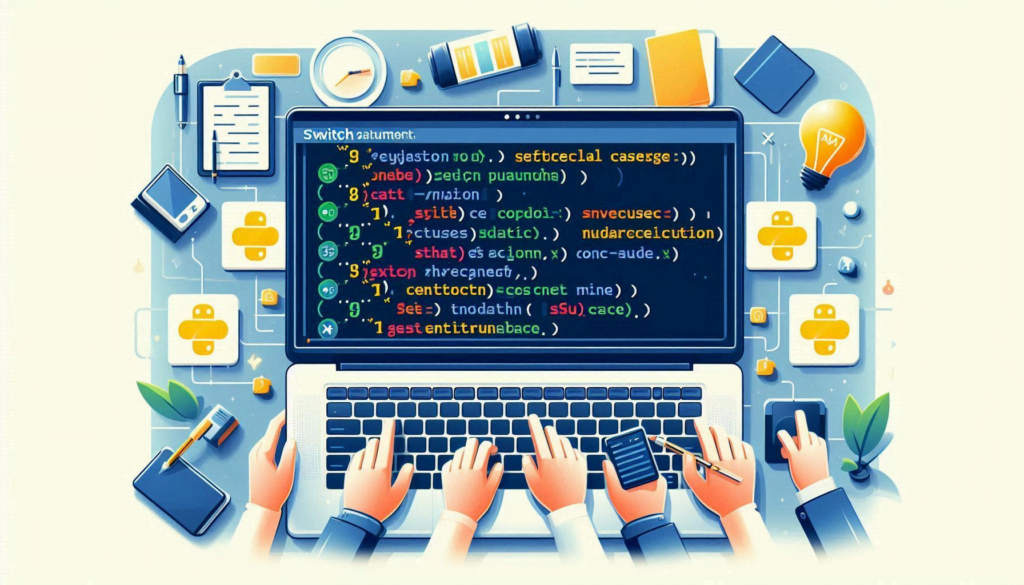

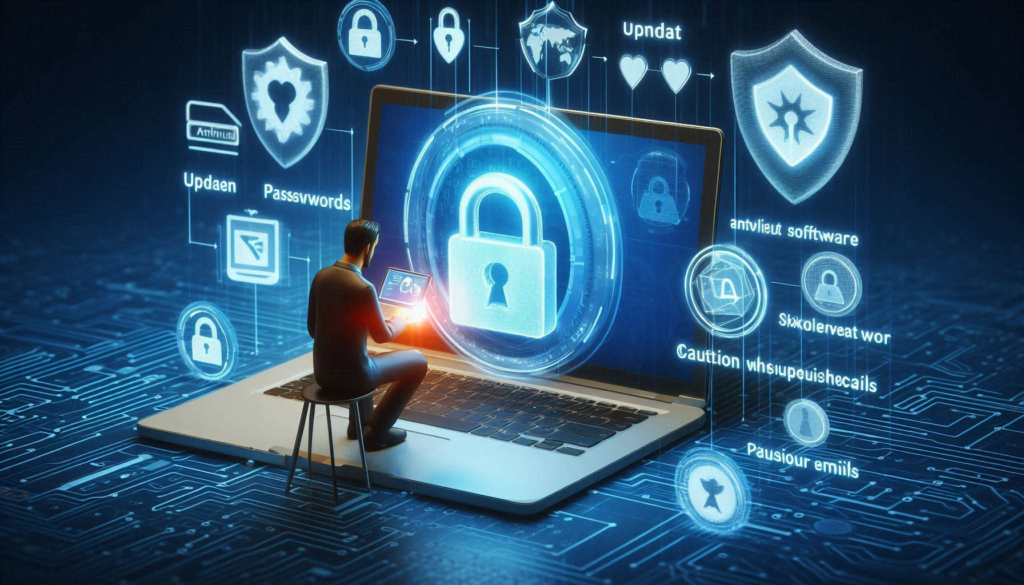
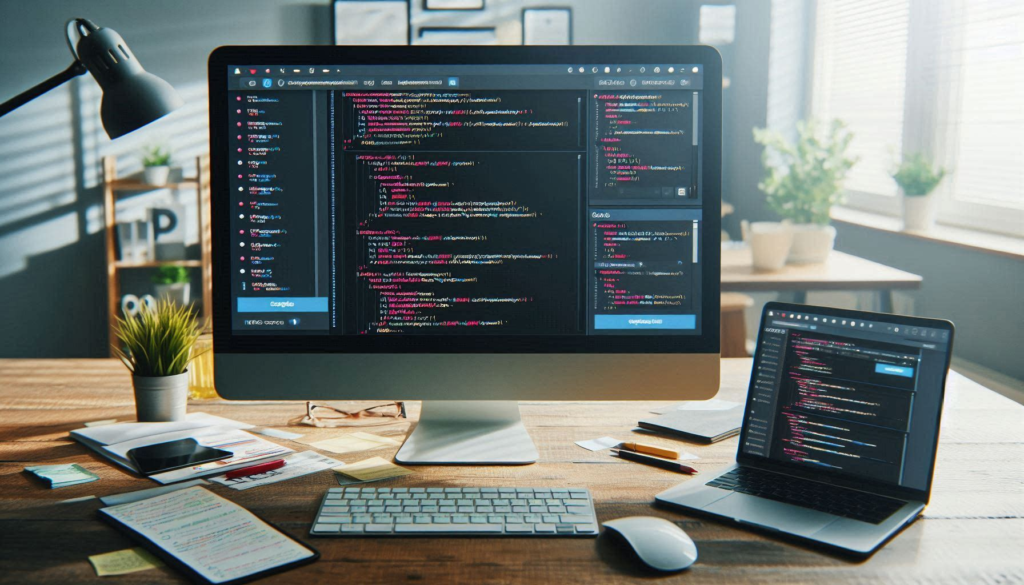
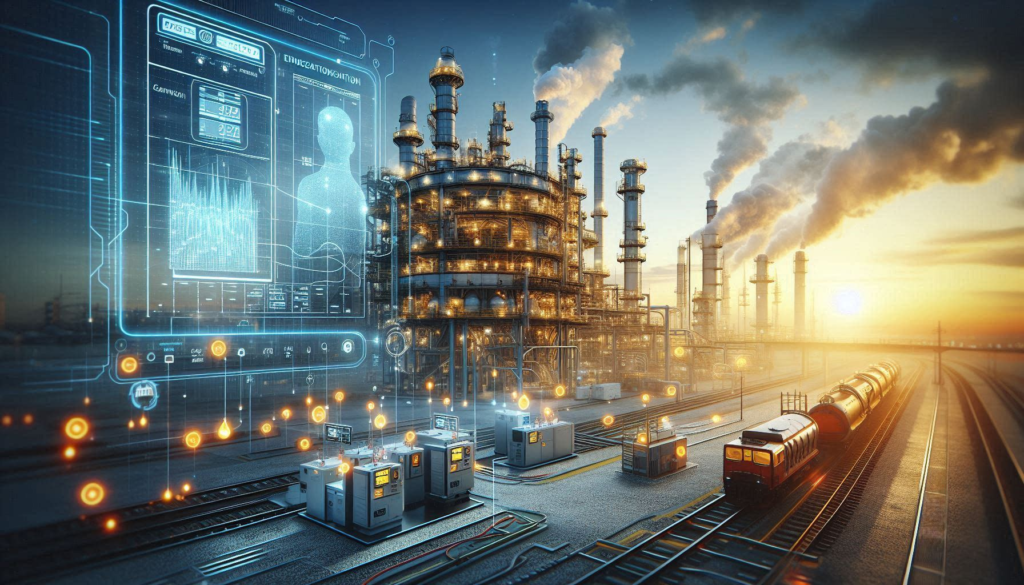
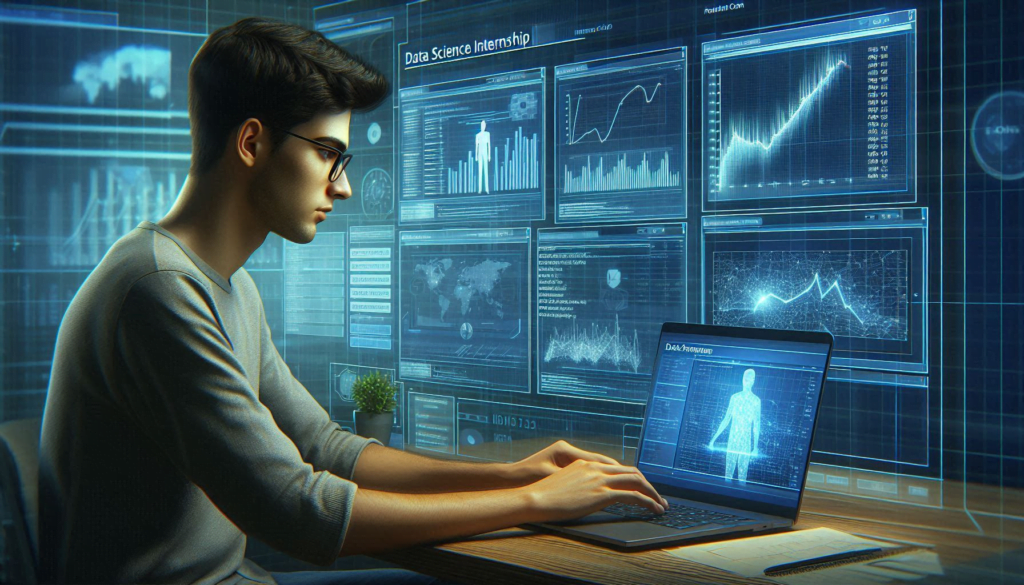
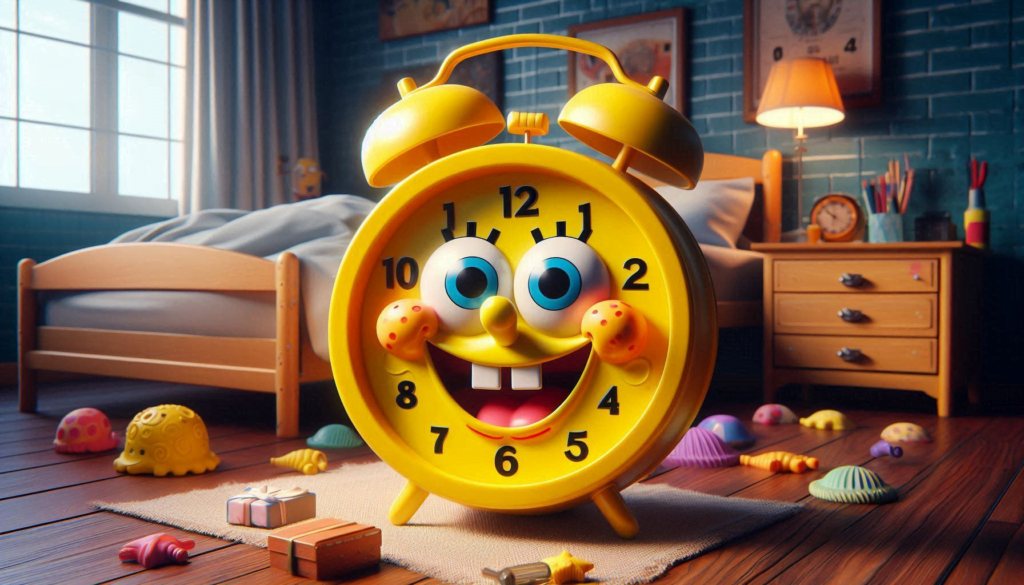

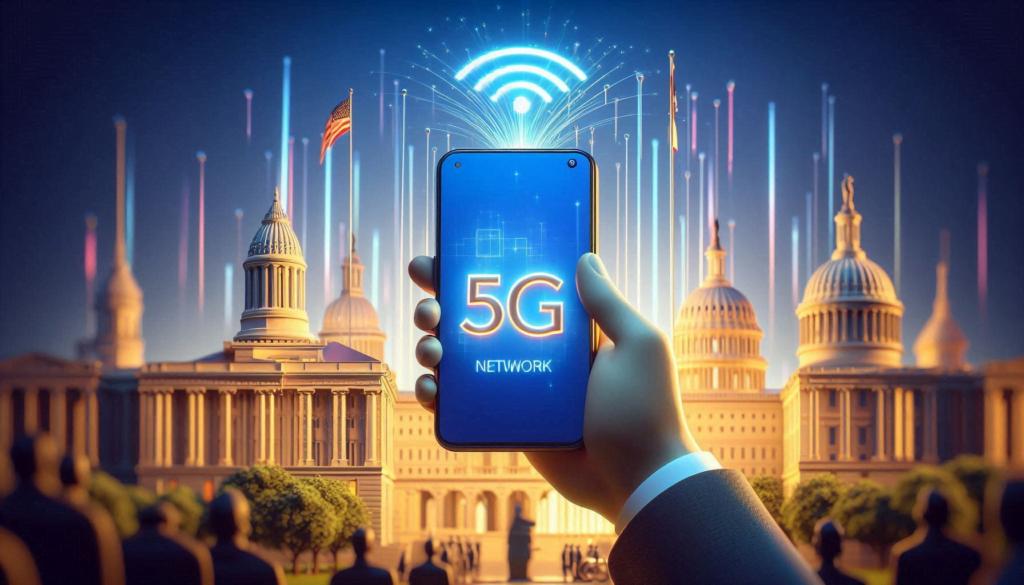


Great piece on sci-fi robots! I appreciated how you highlighted both classic and modern interpretations. However, it might be beneficial to delve deeper into how these representations influence public perception of technology today.
I really enjoyed the exploration of sci-fi robots in your article! The insights into their cultural impact and representation in literature were particularly thought-provoking. It would be interesting to see more examples from contemporary authors as well!
Your article on sci-fi robots was enlightening! The connections you made between literature and real-world advancements were spot on. Perhaps including some reader recommendations for further exploration could enhance the discussion even more!
Fantastic exploration of sci-fi robots in your piece! I loved the historical context you provided, but I think a section on how these narratives reflect current societal fears about AI would add an intriguing layer to your analysis.
I found your article on sci-fi robots fascinating! The way you linked them to broader themes in science fiction was excellent. It might be helpful to include a few quotes from notable authors to support your points even further.